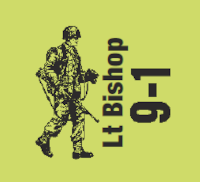
I have been thinking about planning for a while now. It wasn’t a conscious thought; it was an internal monologue that I wasn’t really aware of. I had outlined the process I used without realizing I had done that. Then I authored an article on Obstacles. This article opened my eyes to the process I had outlined in my Maxims article. I realized I had put my process down on paper already but hadn’t recognized it.
I rooted the basis of my approach in my Maxims: VC over everything, terrain, time, and Order of Battle. Analysis of those four things dictated the plan. It also dictates reactions to opportunities and setbacks that occur in ASL. From the myriad of choices, my Maxims provided me with an “Occam’s Razor” for deciding a course of action.
Using the Maxims, I authored a second article on defense in ASL. This solidified my thinking on my process and highlighted another principle I was using, that of patterns. Patterns allow me to break my defense down into smaller tasks and assign the resources to those tasks. Recognition of the pattern allowed me to broadly apply learning across multiple engagements and bring to bear knowledge gained from other scenarios. Still, this thinking had its foundations in my Maxims.
Finally, I authored an article on attacking. Having a method and a framework for decision making freed me from paralysis from analysis. On attack, I follow General George S. Patton’s “A good plan violently executed now is better than a perfect plan executed next week.” In ASL, I would replace “violently” with “aggressively”, but the meaning remains: make a plan and act now. The only person who benefits from your indecisiveness is your opponent. Keep pressure on your opponent and force him to make all the hard decisions. Play with aggression but not recklessly. If you’re ahead, keep doing what you’re doing. If you’re behind, take more chances to see if you can get ahead.
But as ever, knowing the VC, the terrain, the time, and the Orders of Battle are the basis of decision making. If it furthers fulfillment of the VC, then it is a decision worth making, a sacrifice worth making, a furtherance of your aim. Within the confines of the map, winning is all that matters. Just don’t let that single-mindedness creep into your interpersonal relationships such that you’re no fun to play ASL with. No one wants to be matched up against “that guy”.
With that preamble, what I have below as a downloadable PDF is a reworking of articles that appear elsewhere on my blog. This grouping is how I wish I had conceived them to begin with. It is a long work weighing in at 76 pages but it highlights how these articles work together. They are a cohesive set that outlines how I approach ASL. It isn’t the only way. Just the way I play. I am convinced it can also help others find their own approach to ASL.
Take what makes sense and make it part of your game. Think about how you think and how you approach the game. Be deliberate in your self exploration and identify how you play. Try to put these thoughts onto paper–even if only for yourself–and see if they don’t form a framework for decision making. If you’re like me and they do, your play will benefit from it.
I hope you enjoy this series presented in this way. Depending on reception, I may create other article groupings in the future. I look forward to hearing from you on this document. I think it is fundamental to good play and I hope others do too.
Download “Planning in ASL” Planning_in_ASL.pdf – Downloaded 1508 times – 3.13 MB
I used this Acronymn when undergoing NCO training back in 1978…
AFCOP
Aim
Factors affecting that aim
Courses open to me
Obstacles
Plan
All variations of OODA, as are a lot of decision making processes both in and out of the military.
I used the OODA a lot in my professional life because I found it more applicable there. I find it less applicable to the ground combat ASL tries to represent. But you are correct, the processes attempt to turn thinking into routines so you can act more clearly under pressure.
For tactical planning, ie, when first coming under contact, the Mnemonic taught to me as a young infantry NCO in the Canadian Army was COPPED. This is:
Cover
Obstacles
Positions for Fire
Positions for Observation
Enemy
Distance
Essentially, each item corresponded to part of the plan of attack. Cover led to assembly areas and RVs. Obstacles led to planning for engineers. Positions for Fire led to the fire base and Positions for Observation led to positions for cut offs, artillery OPs, etc. Enemy talked to the enemy’s orientation, capabilities, etc and Distance led to time and space.
I’m not sure if this could be translated into ASL, seeing as this was for the attack. I’m sure a smart fella could use it some how
This works as an analysis tool too. It is missing the “mission” aspect embedded into the old American acronym. Still, it is very similar in approach.
Hi,
I was one of the Japanese translators of the ASL rulebook. I had stopped playing ASL for a long period since 2015.
I returned to the game in 2022, and write articles on my blog.
By the way, I happened to know your blog and was very impressed.
If you don’t mind, I would like to translate the “Planning in ASL” and publish it on my blog for free.
I sent you an email regarding this. Let’s take that discussion to email. — jim